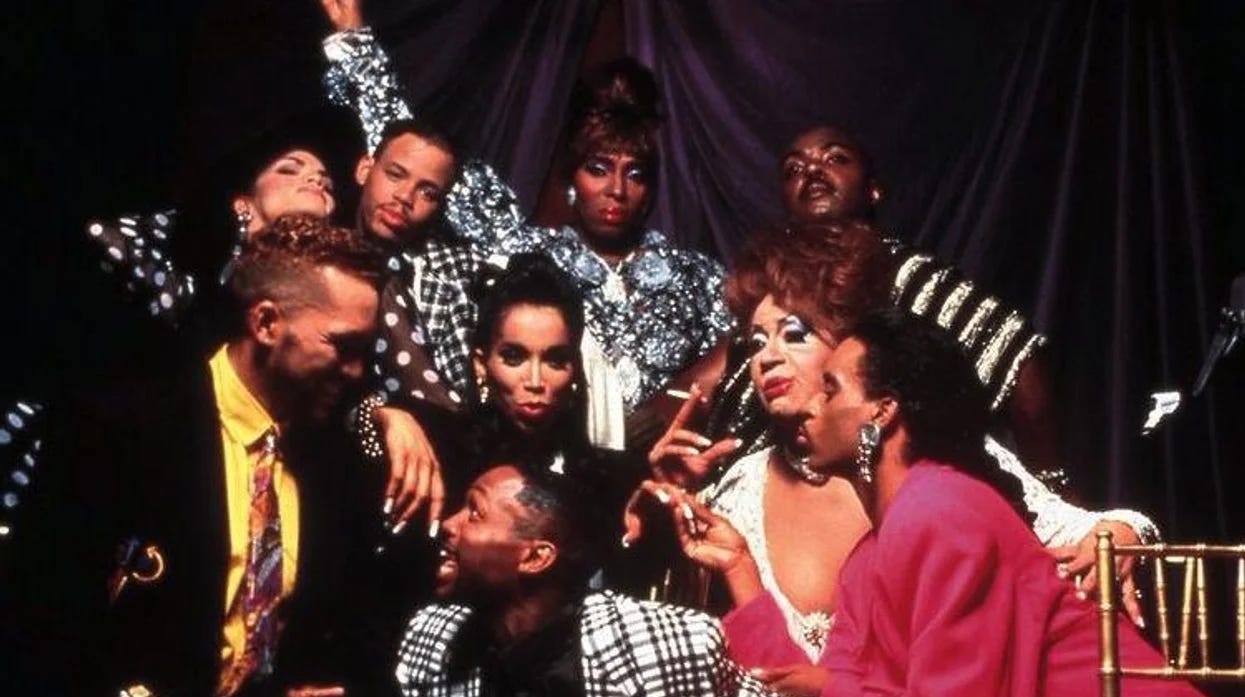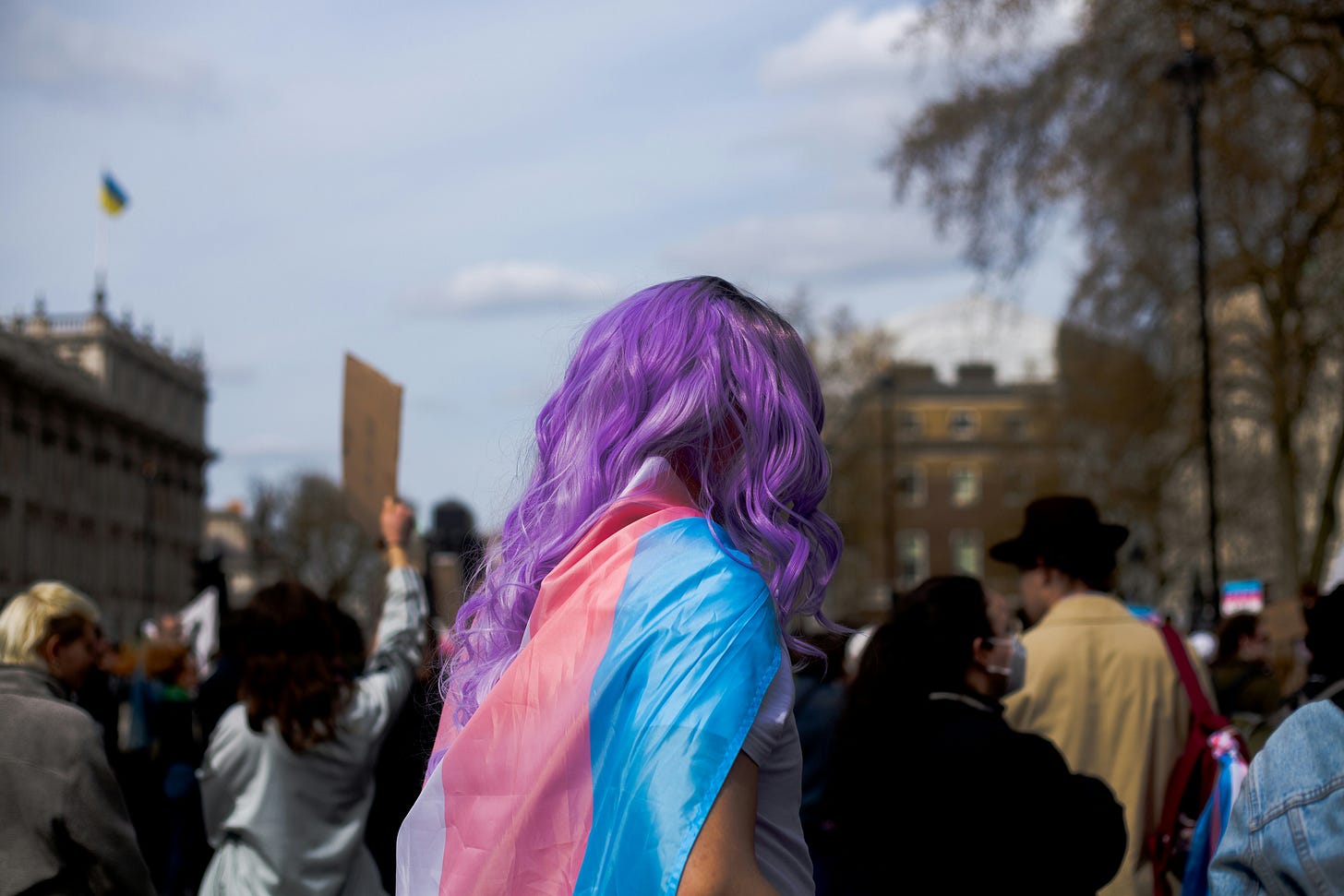Beyond the Runway: How Pose Illuminates the Legacy of the Ballroom Scene
Through its vivid look at New York’s ballroom culture during the AIDS crisis, Pose honors queer history and highlights ongoing struggles for trans rights and healthcare.
Since its finale in 2021, the FX series Pose has been applauded for its depiction of LGBTQ+ rights, ballroom culture, and the impact of the AIDS epidemic.
Set in New York City between 1987 and 1998, the series follows Michaela Jaé Rodriguez as Blanca Rodriguez-Evangelista, a trans woman living with HIV who forms a chosen family—known as a “house” in ballroom culture. Pose offers a lens into Black and Latino queer life during that era, exploring issues such as racism, homophobia, transphobia, sex work, religion, substance abuse and domestic violence.
The ensemble cast also includes Dominique Jackson as Elektra Abundance-Evangelista; Billy Porter as Prayerful “Pray” Tell, a host of the balls; Indya Moore as Angel Vasquez-Evangelista, a sex worker who joins the House of Evangelista; Ryan Jamaal Swain as Damon Richards-Evangelista, a gay dancer expelled from his home; Hailie Sahar as Lulu Evangelista-Ferocity; and Angel Bismark Curiel as Esteban “Lil Papi” Martinez-Evangelista. Other notable cast members include Dyllón Burnside as Ricky Evangelista, Sandra Bernhard as Judy Kubrak—a lesbian nurse working with AIDS patients—Angelica Ross as Candy Johnson-Ferocity, and Evan Peters as Stan Bowes.
Featuring the largest transgender cast in any scripted television series to date, Pose made history when Michaela Jaé Rodriguez became the first trans lead nominated for an Emmy, and Billy Porter became the first openly gay Black man to win an Emmy in a leading category.
The Ballroom as Resistance: Queer Culture on the Margins
Ballroom culture originated in the mid-1800s and evolved into a Black and Latino queer subculture during the Harlem Renaissance, after many people did not feel safe or comfortable in white-dominated LGBTQ spaces.
“This was a space that was created by and for Black and brown LGBT people who did not feel welcome in white, queer or gay spaces because of their race—and also did not feel welcome in Black and brown spaces because of their gender and sexuality,” said Julian Kevon Kamilah Glover, a professor at Virginia Commonwealth University (VCU), in a report.
“It finally gave me an experience and a glimpse into what Black queer life could be and what my life could very well be in terms of both my gender and my sexuality.”
During this time, voguing—a style of dance in ballroom culture that emphasizes movements such as fashion model poses—was formed. It further entered the mainstream consciousness when Madonna released the song “Vogue” in 1990, which peaked at No. 1 on the Billboard Hot 100.
The 1990 documentary Paris Is Burning followed the public and private lives of many involved in New York’s ballroom scene, including Venus Xtravaganza, a trans performer who was killed in 1988; Dorian Corey, a trans woman and fashion designer who died of AIDS complications in 1993; Willi Ninja, a dancer and choreographer who specialized in vogue and died in 2006 from AIDS complications; and Octavia St. Laurent, a model and AIDS advocate who died from cancer in 2009.
“We witness the pride, the DEFIANCE, in those we see walking the ball even as America grappled (or rather, ignored) the AIDS pandemic,” wrote Marie V. Alessandro in a report from the University of Massachusetts Boston (UMASS Boston).
“If that darkness wasn’t clear enough, the movie will bring it front and center with the death of one of the most vivacious and hopeful of the performers, at the hand of violence, cracking the hope inherent in the narrative and brutalizing us with the reality of queer existence in NYC in the ’80s as a poor person of color.”
A Trans Milestone on Screen: Representation with Depth
Pose was renowned for its groundbreaking representation of transgender characters, becoming the series with the largest transgender cast to date. It turned performers such as Michaela Jaé Rodriguez, Indya Moore, Dominique Jackson, Hailie Sahar and Angelica Ross into household names.
“Everybody’s story should be represented at all times in television,” said John Landgraf, chairman of FX Networks, in an interview with Variety.
“That doesn’t just get solved by a show; it gets solved by the nature of what television is. A show can be a pillar that’s holding up representation for a period of time, but it can’t do it permanently, so the work continues.”
A 2017 report from LGBTQ+ advocacy group GLAAD found there were only 17 regular or recurring transgender characters across broadcast, cable and streaming platforms—just two of whom were HIV-positive. Following Pose’s 2018 premiere, GLAAD recorded a then-record high of 8.8% of characters on television identifying as LGBTQ+, crediting the series with helping raise the number of transgender characters to 26 and doubling the number of HIV-positive characters to four.
“We are thrilled that Pose pushes the narrative forward by centering on the unique and under-told experiences of trans women and gay people of color,” series co-creator Steven Canals told Teen Vogue.
Pose also reflected the cultural zeitgeist of the 2010s, a decade in which transgender visibility entered the mainstream. This was due in part to figures like actress Laverne Cox, who became the first transgender person to be nominated for an Emmy for her role in Netflix’s Orange Is the New Black. Cox also made history as the first trans person to appear on the covers of Time and Cosmopolitan magazines and was the first trans actor to play a series regular on broadcast TV.
In 2015, former Olympian and Kardashian family member Caitlyn Jenner announced her transition, becoming a major figure in pop culture. By 2019, 24% of Americans said they personally knew a transgender person—more than double the 11% reported in 2011.
According to Time magazine, 51% of Gen Z respondents agreed that there are more than two genders, compared to 33% of Baby Boomers and Gen X, and 35% of Millennials. Additionally, 2.3% of Gen Z identified as transgender, and 3.3% identified as nonbinary—highlighting the growing impact of trans visibility in media.
However, throughout the 2020s, there has been a regression in trans rights and safety. Statistics from the Trans Legislation Tracker found that more than 923 anti-trans bills have been proposed across the United States, with at least 113 of those bills being passed into law.
According to studies from the Human Rights Campaign (HRC), at least 36 trans people were killed in 2024, with 61% being Black trans women. Since 2013, 73% of all identified victims were transgender women of color, with six in ten—60%—being Black trans women. Three in four victims were under the age of 35, and one in ten was under 21.
Throughout Donald Trump’s second term, The Introspective has previously reported on a series of executive orders targeting trans rights. One report highlighted Trump’s order to bar transgender women from participating in women’s sports. Another documented Defense Secretary Pete Hegseth’s announcement reinstating a ban on transgender people serving in the military, a directive first introduced during Trump’s first term.
“Transgender Americans have served openly and honorably in the U.S. Armed Forces for nearly a decade. Thousands of transgender troops are currently serving and are fully qualified for the positions they hold. No policy will ever erase transgender Americans’ contributions to history, warfighting or military excellence,” said SPARTA Pride, an organization for transgender and nonbinary service members and veterans, in The Introspective report.
“Transgender service members have a unique fighting spirit and will continue to defend the Constitution and American values no matter what lies ahead.”
The AIDS Epidemic as an Ongoing Wound
Set at the height of the AIDS epidemic, Pose highlights how the disease devastated queer communities—particularly Black and Latino communities. In the series, Blanca is diagnosed with HIV in the pilot episode, while Pray Tell is diagnosed later in the first season. His HIV eventually progresses to AIDS, and he dies in the series finale.
“There is a responsibility to a cold, hard truth, and I think we will see it on the show,” said series co-creator Ryan Murphy in a report.
According to studies from the National Institutes of Health (NIH), more than 700,000 people in the United States have died from AIDS since it was first identified in 1981. As of 2024, more than 1.2 million people currently live with HIV, and nearly 32,000 people test positive for the virus each year. A report from the Centers for Disease Control and Prevention (CDC) found that Black Americans account for 37% of new infections, despite representing only 12–14% of the U.S. population. Latino Americans account for 33% of new infections, while comprising about 18% of the population—meaning that these two groups together represent 70% of new HIV infections.
In an NPR report, Juan Carlos Loubriel, director of community and wellness at Washington, D.C.’s Whitman-Walker Health, explained that disparities are partly due to cultural stigmas surrounding LGBTQ identities.
“It’s a continuation of the cultural factors that affect HIV infection. So, Latinos that avoid seeking testing—they avoid the health care system because of stigma, because of their immigration status. If they are MSM [men who have sex with men], the machismo in the community plays a big role,” said Loubriel, who also noted that Latino Americans have the third-highest rate of sexually transmitted infections (STIs).
“Also, you can look at the socioeconomic factors that are kind of like [those among] African Americans—the immigration patterns, lower education, limited access to health care—all those factors that also affect the population, our population.”

Advances in medicine over the years have made HIV a treatable disease, preventing it from progressing into AIDS and ending the notion that a diagnosis is a death sentence. In recent years, preventive measures such as pre-exposure prophylaxis (PrEP) have been approved by the Food and Drug Administration (FDA) to stop HIV from infecting the body.
However, despite improved treatments, stigma continues to persist. In a report by The Spokesman-Review, Rachel Safran, a primary care physician in Spokane, Washington, emphasized the lack of public education.
“I hope and believe that it has gotten better. But there is still so much the broader public does not know about the lives of those living with this disease. We still need more public health campaigns and education about HIV,” said Safran.
“I still, unfortunately, have young people who come in when they’re newly diagnosed and ask how long they have to live.”
Pose has resonated with audiences for its portrayal of queer life, ballroom culture, and the AIDS epidemic. As conversations around trans rights, healthcare disparities, and LGBTQ+ representation continue, the series stands as both a tribute to those lost and a call to action for justice, visibility, and change.





